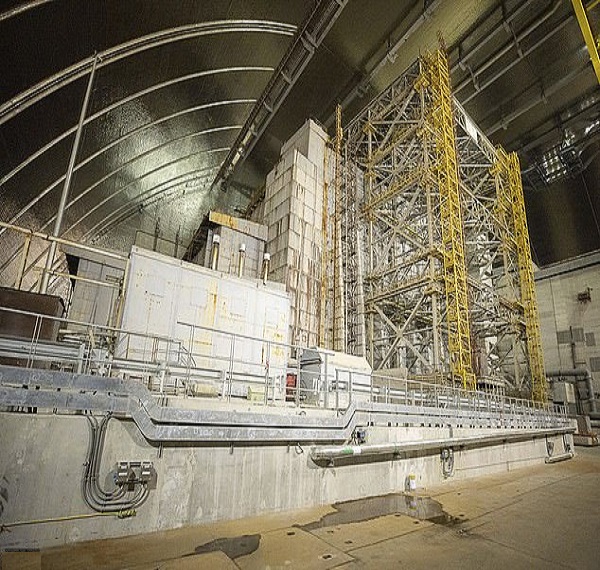

The trees growing there today continue to absorb the fallout from the disaster when they root into soils holding carcinogenic radionuclides like cesium-137 and pull them up into their leaves. The soil holds more than 90 percent of the radionuclides that fell on the forest, after needles covered in fallout fell to the ground and trees killed by it were bulldozed and buried. Radioactivity from the disaster also killed bacteria, fungi and invertebrates that would have helped break down trees, needles and leaves, slowing the decomposition of vegetation in parts of the forest by up to 40 percent.

Once known as the “Red Forest” for the rusty color the pines took after being killed off by radiation from the meltdown, the woodlands around Chernobyl have experienced an increase in wildfire in recent years. “The larger danger is the potential for forest fires in the area to put out radioactive smoke,” Mousseau said. “It’s not surprising given that hundreds of military vehicles are passing through the area stirring up dust,” said Timothy Mousseau, a biology professor at the University of South Carolina who studies the effects of radiation on organisms in Chernobyl.īut the ability of dust surrounding Chernobyl to spread radiation points to a bigger threat in the area, one that can be set off by violent conflict. Rather than a release of material from the containment facility holding the reactor that melted down-the International Atomic Energy Agency reported that there have been no destruction or casualties at the facility-most experts believed that the increase was due to radioactive dust and soils disturbed by tanks and other vehicles during the siege. “For the second day, the occupiers have been detaining the personnel of the NPP station, not allowing them to rotate as required by technical safety rules,” Ukraine’s Ministry of Energy reported in a statement.Īutomated sensors in the area surrounding the nuclear facility have detected spikes in radiation levels since the Russian occupation of the plant, although the increases have remained below dosages believed to be dangerous to human health. On Friday, however, Russian forces were reported to be continuing to interrupt the mainaintence, safety and cleanup work at the site. The contaminated wreckage of the plant and the nuclear fuel contained there will be dangerous for centuries and requires constant maintenance. Estimates for the total, long-term death toll from the disaster run as high as 1 million people. Exposure to the radioactive fallout is believed to have caused some 5,000 cases of thyroid cancer in the region, at least 15 of them fatal, and caused thousands of other premature deaths. The 1986 explosion of Chernobyl’s Reactor 4 killed two first responders, and 28 more died from radiation poisoning in the following weeks. We condemn it and request their release.” “This unlawful and dangerous hostage-taking, which could upend the routine civil service efforts required to maintain and protect the nuclear waste facilities, is obviously incredibly alarming and gravely concerning.

“We’re outraged by credible reports that Russian soldiers are currently holding the staff of the Chernobyl facility hostage,” White House Press Secretary Jen Psaki said during a news conference Thursday. Chernobyl “can happen again in 2022.”īy Thursday afternoon, Ukraine reported that Russian troops had captured the facility and detained the staff overseeing cleanup and maintenance of the site, intensifying alarm in world leaders already horrified by the Russian invasion. The Russian attack “may cause another ecological disaster,” the Ukrainian Foreign Ministry reported.


 0 kommentar(er)
0 kommentar(er)
